Click the exhibit button.
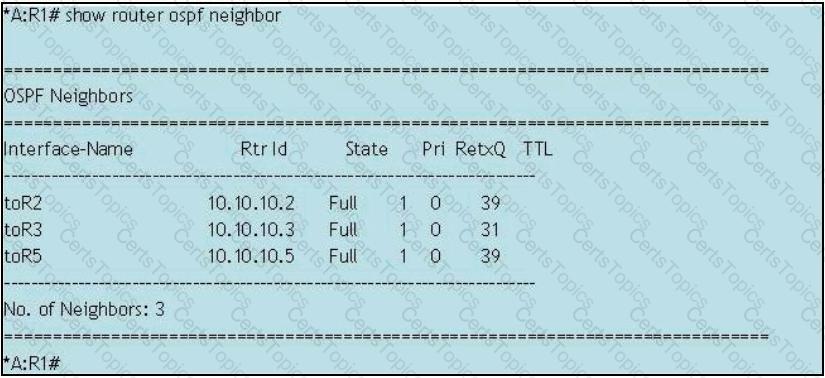
The following command sequence is executed on router R2:
What command could be used to verify proper configuration of a static route in an Nokia 7750 SR router?
In an OSPF Hello packet what fields must match all neighbor routers on the segment? (Choose 3)
Which LSA type is not found in point-to-point only OSPF networks?
What command will show the OSPF neighbors, and their status on the Nokia 7750 SR?
Which of the following LSA types stay within an OSPF area, and are not flooded outside of the area? Choose two answers.
Which of the following statements describe the major features of OSPF? Choose two answers.
Click the exhibit button.
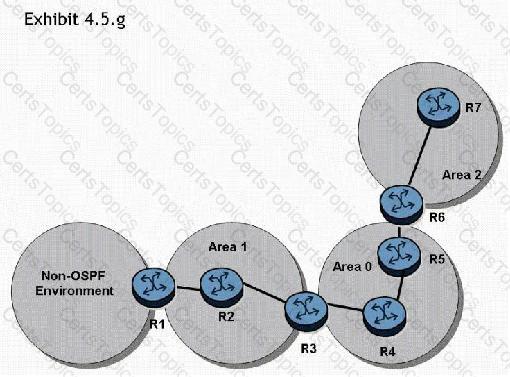
In the topology shown, router R1 is an ASBR configured to export external routes to OSPF. Assuming that there are no stub networks, which of the following statements regarding type 4 LSA generation is true?
Which of the following cannot be used as a matching criterion in route policy statements?
An Nokia 7750 SR receives a route via an IS-IS LSP with internal reachability, and receives the same route via an OSPF type 5 LSA. If all protocol preferences are default, which route will be installed in the route table?
Refer to the exhibit.
Assume that OSPFv3 is properly configured on all routers and that R4 advertises its system prefix into Area 0. Which of the following statements best describes how R5 learns R4's IPv6 system prefix?
Click the exhibit button.
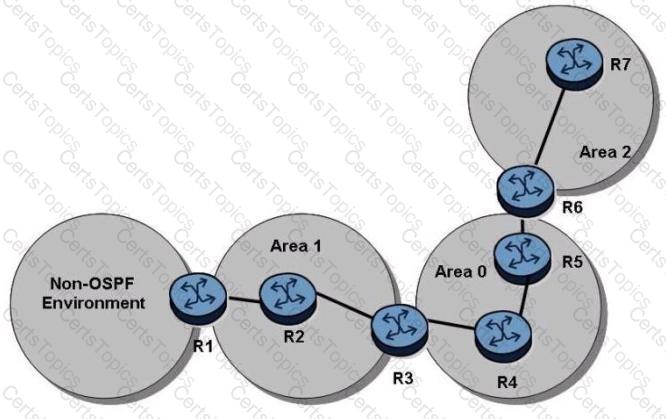
In the topology shown, router R1 is an ASBR configured to export external routes to OSPF. Assuming that there are no stub networks, which of the following statements regarding Type 4 LSA generation is true?
Identify two attributes of Distance Vector Protocols: (Choose two)
Which of the following statements apply to link state protocol behavior? Choose three answers.
Click the exhibit button.
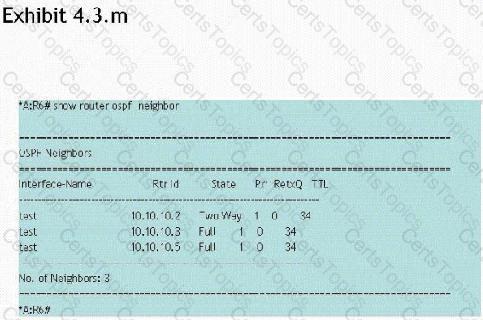
What can you deduce from the show command on router R6?
Which of the following statements regarding the election of the designated router (DR) by OSPF routers are true? (Choose two)
If OSPF is used in a multi-area OSPF network, which of the following statements regarding route summarization is true?
Refer to the exhibit.
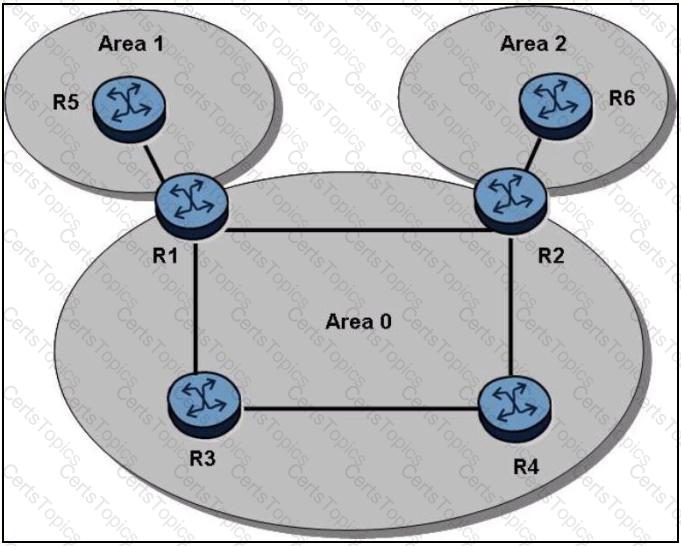
Assume that OSPFv3 is properly configured on all routers and that R4 advertises its system prefix into Area 0. Which of the following statements best describes how R5 learns R4's IPv6 system prefix?
What is the protocol number for OSPF in the IP header?
Graceful Restart is supported by what IGPs?
What are the default Hello and Dead timer intervals for OSPF on the Nokia 7750 SR?
Which of the following statements regarding area border routers in an OSPF network is true?
Click the exhibit button.
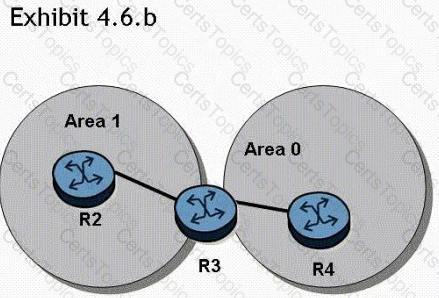
Which of the following would correctly configure routers R2, R3, and R4?
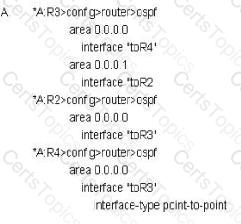
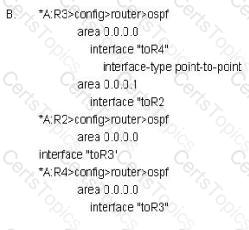
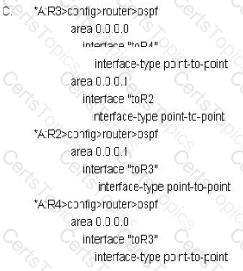
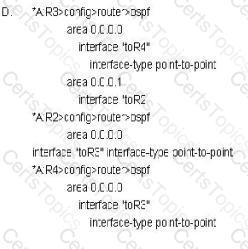
What are the ways the RID can be created on a Nokia 7750 SR router? (Choose three)
The Nokia 7750 SR supports which two of the OSPF area types below?
What is the default priority value used for electing the DR on an Nokia 7750 SR running OSPF on an Ethernet?
Click the exhibit button.
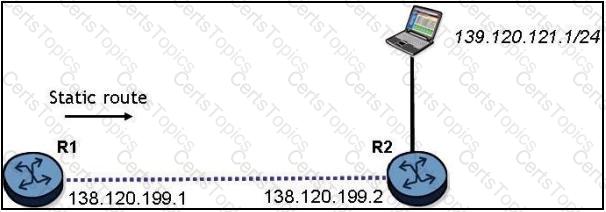
What is the command to configure a static route on the Nokia 7750 SR router R1 to reach the network behind router R2?
Click the exhibit button.
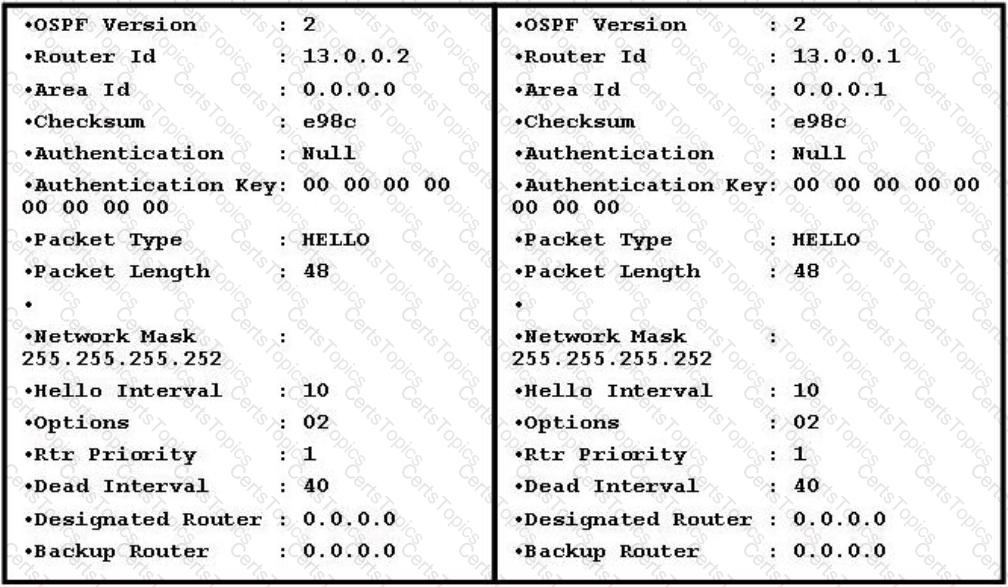
Two neighboring OSPF routers have exchanged the packets shown. What state is the adjacency in?
Static routing will be used in a network between a corporate head office, with many connected networks, and a branch office, with one connection to the head office. Which of the following best describes the likely configuration?
Click the exhibit button.
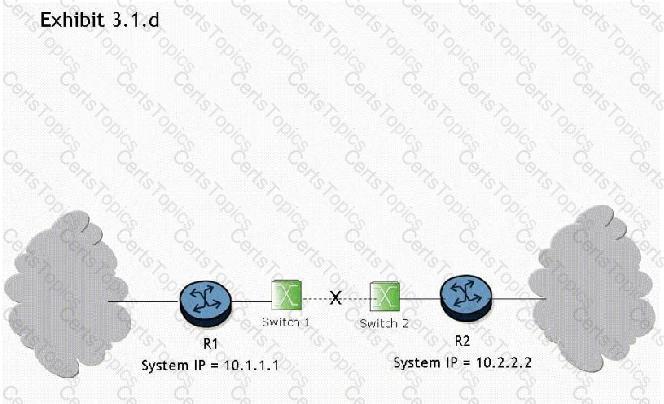
What triggers convergence of the routing protocol when the link between switch 1 and switch 2 goes down?
Click the exhibit button.
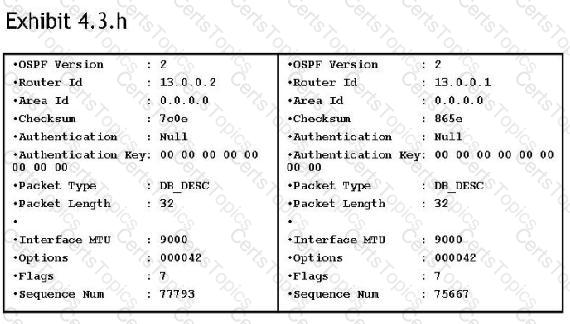
The OSPF packets shown have been exchanged between two neighbors. What state is the OSPF adjacency in?